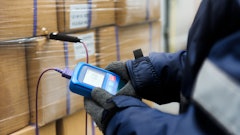
CargoNet, a Verisk Analytics product, recorded 884 supply chain theft events across the United States and Canada in the second quarter of 2025, representing a 13% increase compared to the same period in 2024 and a 10% increase from the first quarter of 2025. The estimated total loss value exceeded $128 million when applying average loss values to incidents where specific values were not reported.
"The strategic targeting of specific commodities reveals the business-like approach of modern cargo theft operations," says Keith Lewis, VP of operations for Verisk CargoNet, "These aren't opportunistic crimes – they're calculated operations targeting goods with the highest illicit-market value and easiest resale potential."
Key takeaways:
· The data reveals an acceleration in theft activity throughout the quarter, with incidents increasing 14.6% in April, 4.4% in May, and a substantial 21.9% surge in June.
· Metals theft experienced the most dramatic increase, nearly doubling with a 96% year-over-year surge to 53 incidents. This unprecedented growth coincides with copper trading near or above record highs, suggesting that organized crime groups strategically adjust their targeting based on commodity market values.
· Food and beverage products also saw substantial growth, with 180 reported incidents representing a 68% increase from Q2 2024. This category now accounts for over 20% of all cargo thefts, with alcoholic beverages, energy drinks, and meat products being primary targets.
· The average stolen shipment value of $203,586 represents a significant economic impact on the supply chain, with ripple effects including increased insurance costs, delivery delays, replacement orders, and ultimately higher consumer prices.
· Looking ahead to the remainder of 2025, CargoNet analysts warn that complex cargo theft schemes involving document fraud and identity theft are becoming increasingly prevalent.
"Traditional physical security measures alone are no longer sufficient," says Lewis. "The industry must adopt a multi-layered approach combining physical security, digital verification, and real-time intelligence sharing to combat these evolving threats."


















